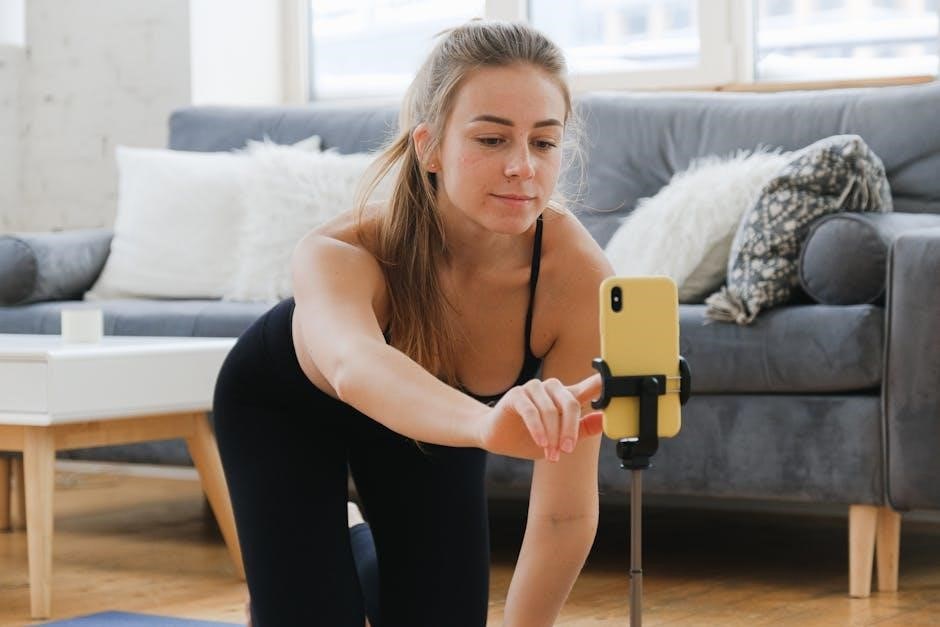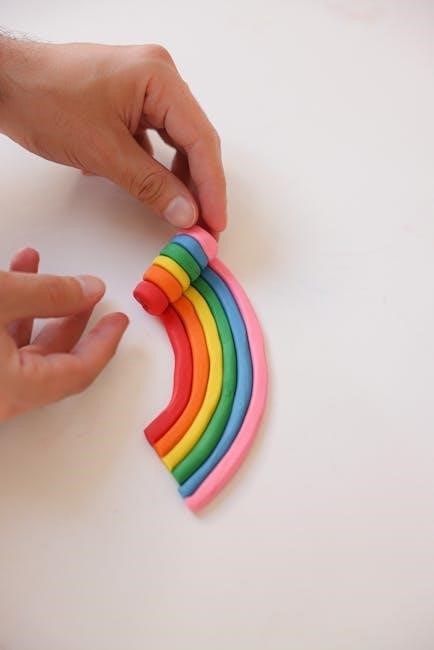Self-bondage is the practice of restraining oneself for personal pleasure or exploration. It combines physical and psychological elements, offering a unique way to explore control and liberation. While thrilling, it demands careful planning and safety measures to ensure a positive experience.
What is Self-Bondage?

Self-bondage is the practice of restraining oneself using ropes, locks, or other tools, creating a thrilling solo experience that combines physical and psychological elements. It allows individuals to explore themes of control, liberation, and personal empowerment. Unlike traditional bondage, self-bondage is entirely self-directed, requiring careful planning and preparation to ensure safety. This practice goes beyond physical restraint, often involving sensory play, escapism, or emotional exploration. It appeals to those curious about power dynamics and personal limits, offering a unique way to challenge oneself mentally and physically. With proper precautions, self-bondage can be a deeply satisfying and transformative experience, fostering self-awareness and confidence.
Safety First: Essential Precautions
Safety is paramount in self-bondage. Always use safety tools, avoid restricting vital areas, and ensure quick release mechanisms are in place. Plan meticulously to minimize risks and ensure freedom.
Preparing a Safe Environment
Creating a safe space for self-bondage is crucial to ensure a positive and risk-free experience. Start by clearing the area of any hazards, such as sharp objects or fragile items, that could cause injury. Ensure good ventilation and a comfortable temperature to prevent overheating or discomfort. Keep safety tools, like safety scissors or EMT shears, within easy reach in case of an emergency. Avoid restraining yourself near windows, mirrors, or hot surfaces. Use a sturdy, non-slip surface to prevent accidents and ensure you can monitor your surroundings. Always have a backup key or cutting tool nearby if using locks. Never restrict your neck, chest, or breathing abilities, and avoid applying pressure near joints or arteries. By carefully planning and preparing your environment, you can minimize risks and focus on enjoying the experience. Remember, safety should always come first.
Choosing the Right Tools and Gear
Selecting the appropriate tools and gear for self-bondage is essential for both safety and effectiveness. Opt for high-quality materials that are durable yet gentle on the skin. Ropes made from soft, breathable materials like cotton, silk, or nylon are ideal, as they reduce chafing and discomfort. Avoid using household items like twine or zip ties, as they can cause injury. For restraints, consider using padded cuffs or adjustable straps to ensure a secure yet comfortable fit. When incorporating locks, choose options like magnetic locks or ice locks, which are easy to release and provide an additional layer of safety. Always test your gear before use to ensure it functions properly and does not cause unintended harm. Investing in the right tools not only enhances your experience but also minimizes potential risks, making your self-bondage sessions more enjoyable and stress-free. Quality and reliability are key when selecting your gear.
Mental and Physical Preparation
Mental and physical preparation are vital for a safe and enjoyable self-bondage experience. Start by fostering a clear and focused mindset, ensuring you are fully present and aware of your actions. Plan your session in advance, setting clear boundaries and goals to avoid impulsive decisions. Hydrate thoroughly, especially if using heat-retaining gear, and avoid alcohol or drugs, as they can impair judgment and reaction times. Physically, dress comfortably and avoid tight clothing that may restrict movement or circulation. Create a calm and distraction-free environment, ensuring you have all necessary tools within reach. Mentally, practice relaxation techniques to manage anxiety and build confidence. Begin with simple techniques and gradually progress, listening to your body and emotions. Preparation is key to balancing pleasure and safety, allowing you to explore self-bondage with confidence and control. A well-prepared mindset and body ensure a fulfilling and risk-aware experience.

Basic Self-Bondage Techniques
Mastering basic self-bondage techniques is essential for beginners. Start with simple rope ties and gradual restraint methods, ensuring comfort and safety. Practice knots and quick-release strategies to build confidence and control.
Simple Rope Ties for Beginners
For those new to self-bondage, starting with simple rope ties is crucial. Begin with a basic overhand knot to secure wrists or ankles, ensuring it’s not too tight. Use soft, durable ropes like cotton or nylon, which are gentler on the skin. Practice tying knots in front of a mirror to monitor progress. A fundamental technique is the square knot, which is easy to learn and reliable. Always keep safety scissors nearby to quickly release if needed. Gradually experiment with more complex ties as confidence grows. Remember, the key is to stay calm and methodical, allowing you to enjoy the experience without unnecessary risks; These foundational skills will pave the way for more advanced techniques in the future.
Quick Release Methods
Quick release methods are essential for ensuring safety in self-bondage. Always have a reliable way to free yourself, such as safety scissors or a backup key. Consider using a quick-release knot, like the bowline or figure-eight, which can be undone with one hand. Magnetic locks or ice locks are popular due to their ease of release. Test your setup beforehand to ensure you can exit quickly if needed. Avoid relying solely on complex knots, as they may be difficult to remove under stress. Keeping a tool within arm’s reach is a smart precaution. For rope setups, a slipknot or toggle release can provide an easy exit. Always plan for emergencies and practice releasing yourself before fully restraining. This ensures confidence and safety, allowing you to enjoy the experience without unnecessary risks.

Advanced Self-Bondage Tutorials
Advanced techniques like the hogtie and intricate rope patterns require precision and practice. Tutorials offer step-by-step guidance, helping you master complex restraints safely and confidently.
Mastering the Hogtie Technique
The hogtie technique involves securing the hands and feet behind the back, creating a challenging yet exhilarating restraint. To master this, start by practicing basic knots and rope handling. Use soft, durable ropes to minimize discomfort and ensure proper circulation. Position yourself on a comfortable surface, such as a mattress, to prevent pressure points. Begin by tying your ankles together with a secure knot, then gradually work your way up to your wrists. Always leave enough slack to avoid tightness near joints or arteries. Consider using quick-release mechanisms for added safety. Practice slowly and methodically, testing each step before fully restraining yourself. Remember to breathe deeply and stay relaxed to enhance the experience. With patience and practice, the hogtie can become a fulfilling and enjoyable part of your self-bondage routine.

Exploring Sensory Play and Restraint
Sensory play and restraint in self-bondage offer a profound way to heighten sensations and explore control. By combining physical restriction with sensory stimulation, you can create a deeply immersive experience. Use tools like blindfolds, velvet ropes, or textured fabrics to enhance tactile sensations. Incorporate temperature play with ice or warm wax for contrasting feelings. Sensory deprivation, such as earplugs or masks, can intensify focus on other senses. When restraining, experiment with partial mobility to maintain awareness of your body. Mindfulness and relaxation are key—take deep breaths to fully immerse in the experience. Always ensure quick-release mechanisms are in place for safety. This fusion of restraint and sensory exploration allows for a deeper connection with your body and emotions, making it a rewarding addition to your self-bondage journey.
